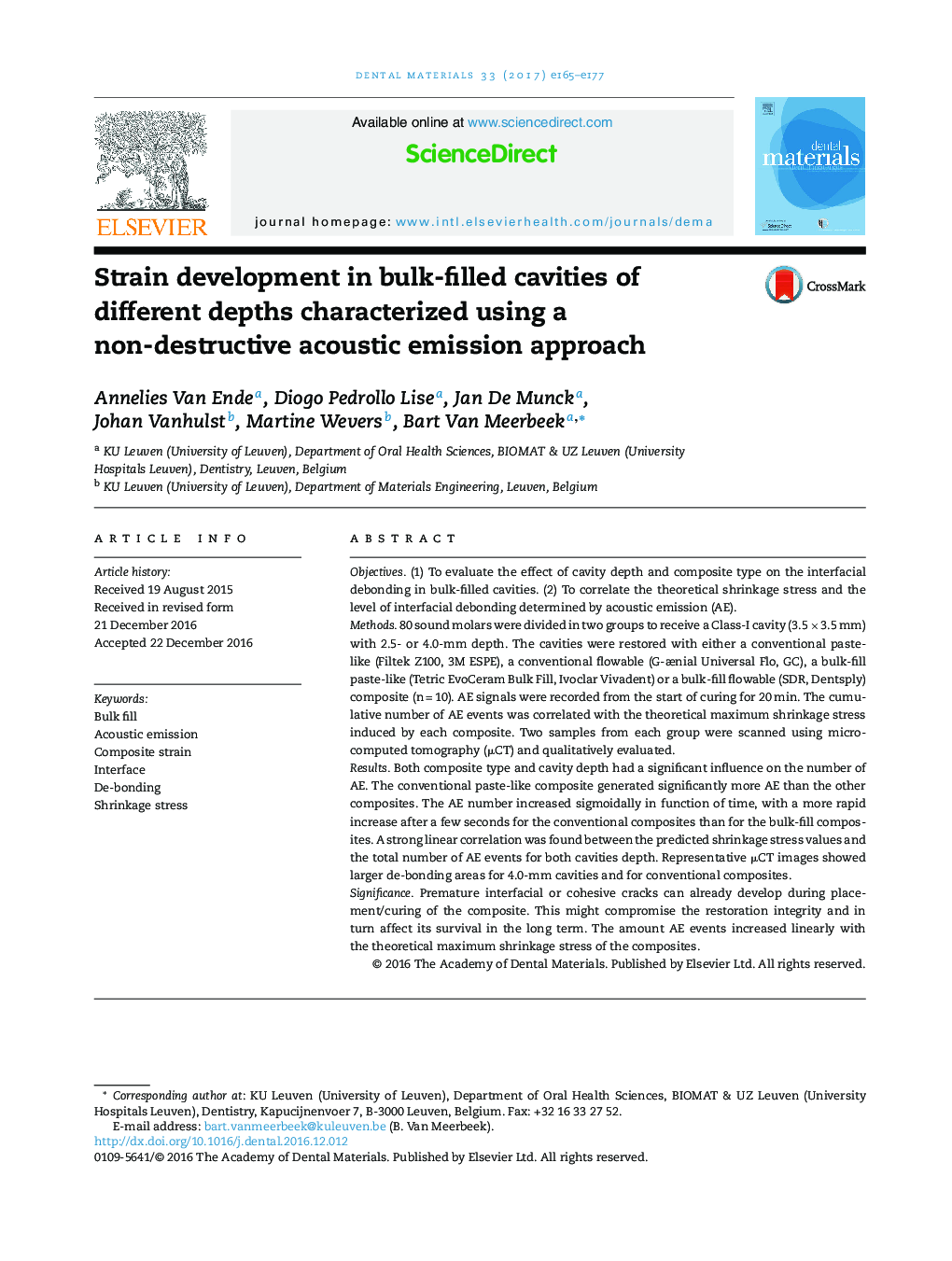| کد مقاله | کد نشریه | سال انتشار | مقاله انگلیسی | نسخه تمام متن |
|---|---|---|---|---|
| 5432905 | 1398046 | 2017 | 13 صفحه PDF | دانلود رایگان |
Objectives(1) To evaluate the effect of cavity depth and composite type on the interfacial debonding in bulk-filled cavities. (2) To correlate the theoretical shrinkage stress and the level of interfacial debonding determined by acoustic emission (AE).Methods80 sound molars were divided in two groups to receive a Class-I cavity (3.5 Ã 3.5 mm) with 2.5- or 4.0-mm depth. The cavities were restored with either a conventional paste-like (Filtek Z100, 3M ESPE), a conventional flowable (G-ænial Universal Flo, GC), a bulk-fill paste-like (Tetric EvoCeram Bulk Fill, Ivoclar Vivadent) or a bulk-fill flowable (SDR, Dentsply) composite (n = 10). AE signals were recorded from the start of curing for 20 min. The cumulative number of AE events was correlated with the theoretical maximum shrinkage stress induced by each composite. Two samples from each group were scanned using micro-computed tomography (μCT) and qualitatively evaluated.ResultsBoth composite type and cavity depth had a significant influence on the number of AE. The conventional paste-like composite generated significantly more AE than the other composites. The AE number increased sigmoidally in function of time, with a more rapid increase after a few seconds for the conventional composites than for the bulk-fill composites. A strong linear correlation was found between the predicted shrinkage stress values and the total number of AE events for both cavities depth. Representative μCT images showed larger de-bonding areas for 4.0-mm cavities and for conventional composites.SignificancePremature interfacial or cohesive cracks can already develop during placement/curing of the composite. This might compromise the restoration integrity and in turn affect its survival in the long term. The amount AE events increased linearly with the theoretical maximum shrinkage stress of the composites.
199
Journal: Dental Materials - Volume 33, Issue 4, April 2017, Pages e165-e177
